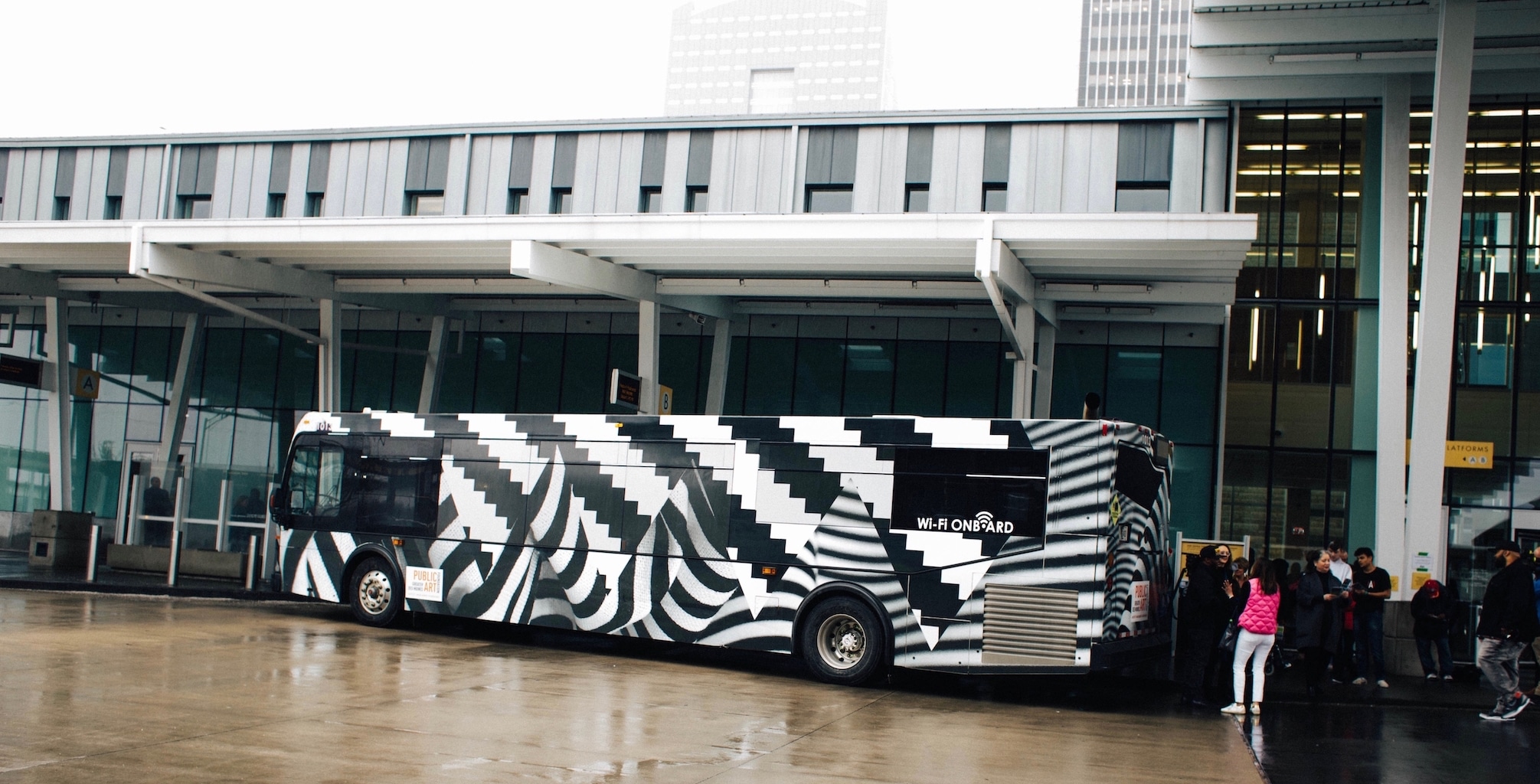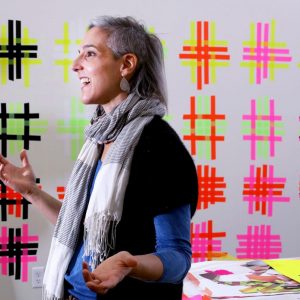


Bus Wrap #9: “Zigs Zag, Zags Zig”
Created by artist Marianne Fairbanks, Zigs Zag, Zags Zig is the title of the ninth (9th) commission by the Public Art Foundation in collaboration with the DART (Des Moines Area Regional Transport Authority). The bus travels approximately 27,000 miles per year or 2,250 miles per month into communities throughout Greater Des Moines. These routes include Ankeny, Altoona, Pleasant Hill, Des Moines, Grimes, Windsor Heights, West Des Moines, Clive, Urbandale and Johnston. Zigs Zag, Zags Zig was unveiled to the public on 13 March 2019 at DART Central Station.
The title of the design, Zigs Zag, Zags Zig, refers to the back and forth nature of this design. Formally the work uses two different line-based patterns (one soft and undulating the other hard and diagonal), the sawtooth triangles that serve to interrupt and define the patterns, and a binary palate of black and white to create a cacophony of movement and some level of disorientation for the viewer. Conceptually, the work is grounded in ideas of a more emotional back and forth and how one can vacillate between polarities of feelings in this current moment, and in this case places as they travel to and from on the bus.
Disruption coloration is found in many species of animals were the bold pattern actually confuses the eye of other animals who cannot distinguish the pattern from the background. In this case, the weaving structure of a twill pattern (think denim jeans) is enlarged and layered with a photograph of undulating striped fabric. Foreground becomes background and background foreground as the viewers eye searches for a resting spot. The imagery of the undulating cloth creates movement and dimension while the flatter twill pattern creates a strong diagonal. These patterns are about textiles systems but also about math and geometry. The zig zag shape is derived from the flat pattern of an icosahedron, one the five regular platonic solids and essential shape in the expensive fields of geometry, philosophy and astronomy. I am specifically interested how the geometric principles of 3-d form making relate to textile logic systems; both the structural integrity of woven cloth and the decorative patterning.
My work pays homage to sophisticated textile traditions including age-old indigenous processes in form-making and domestic hand-spun textile production. It is equally informed by the Platonic geometry used in architectural forms and sculptures pioneered by American architect Buckminster Fuller. Mathematics is at the heart of these systems of logic – both pliable textiles and Platonic solids – and serves as the springboard for bold, material-based explorations. Between the inflated scale and bold patterns this work destabilizes conventional gender based value systems of hard and soft form-making, and encourages a deep engagement with our material world.
Marianne Fairbanks
